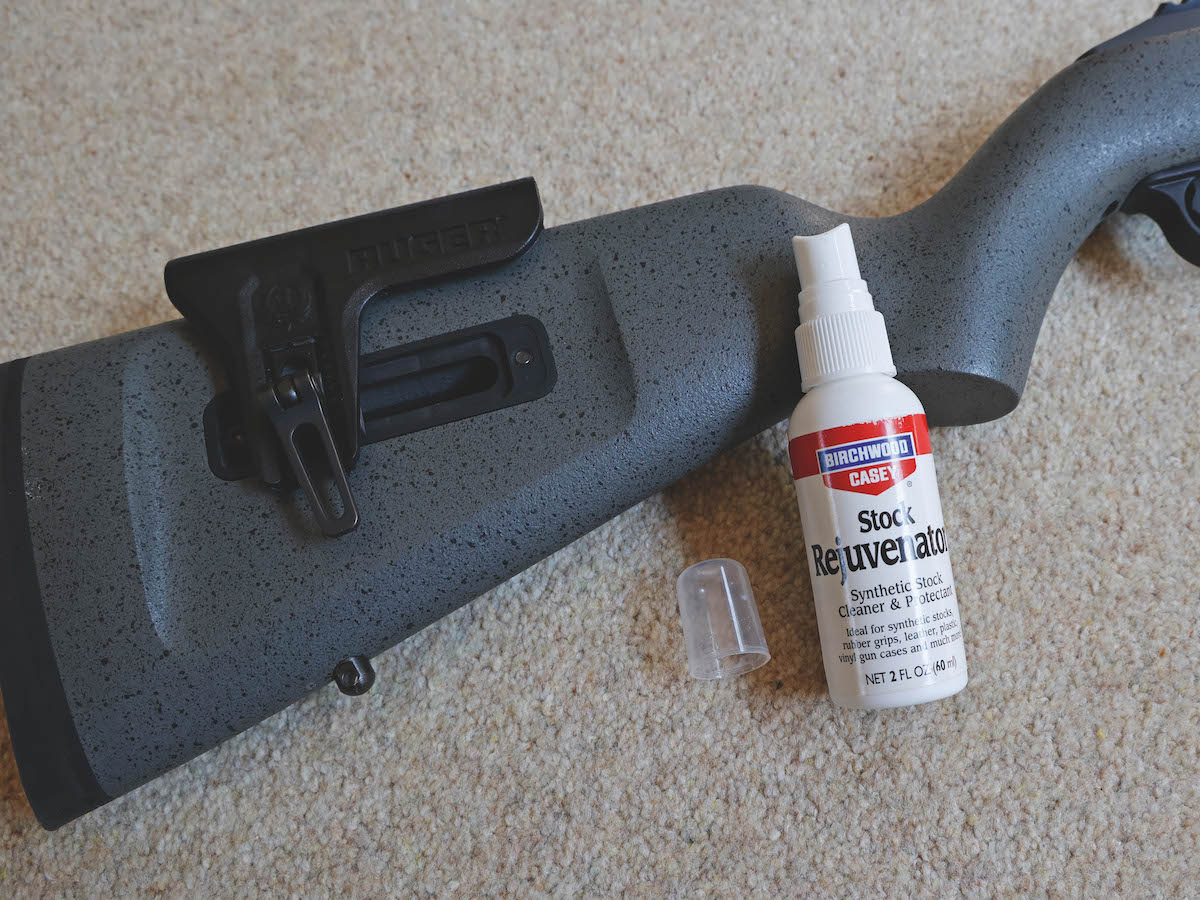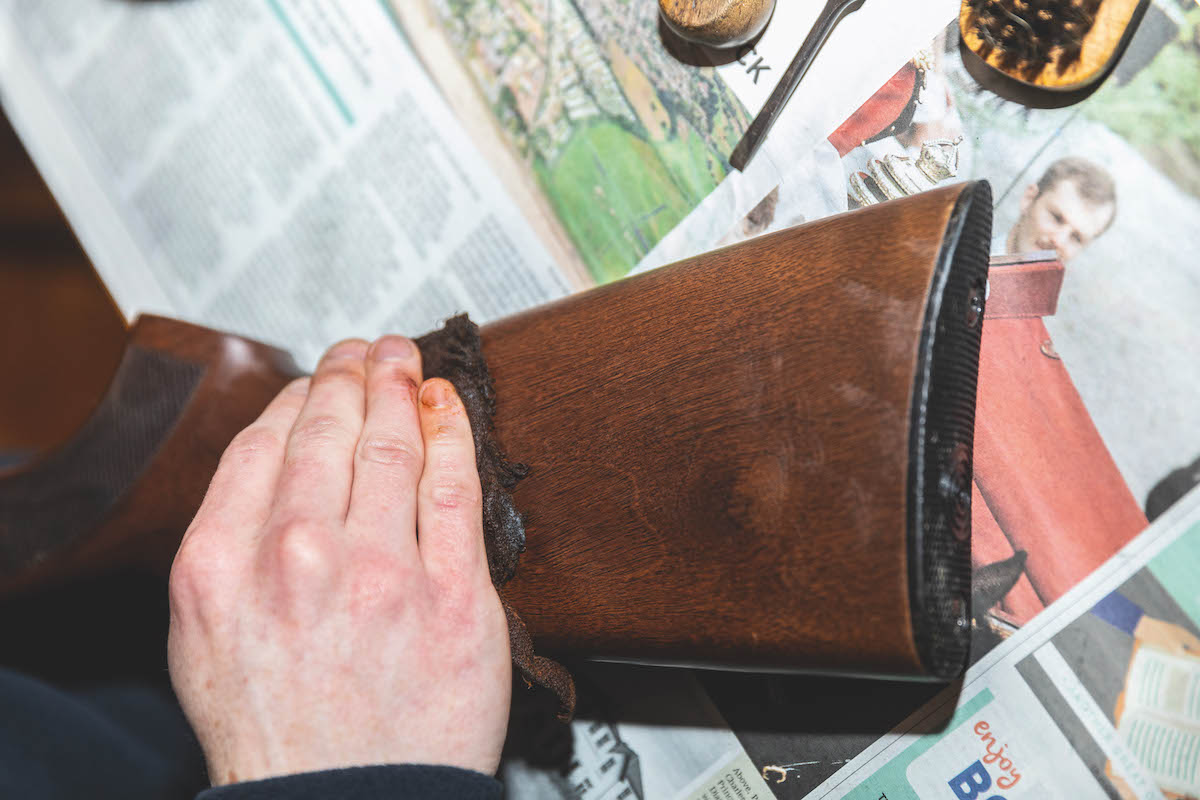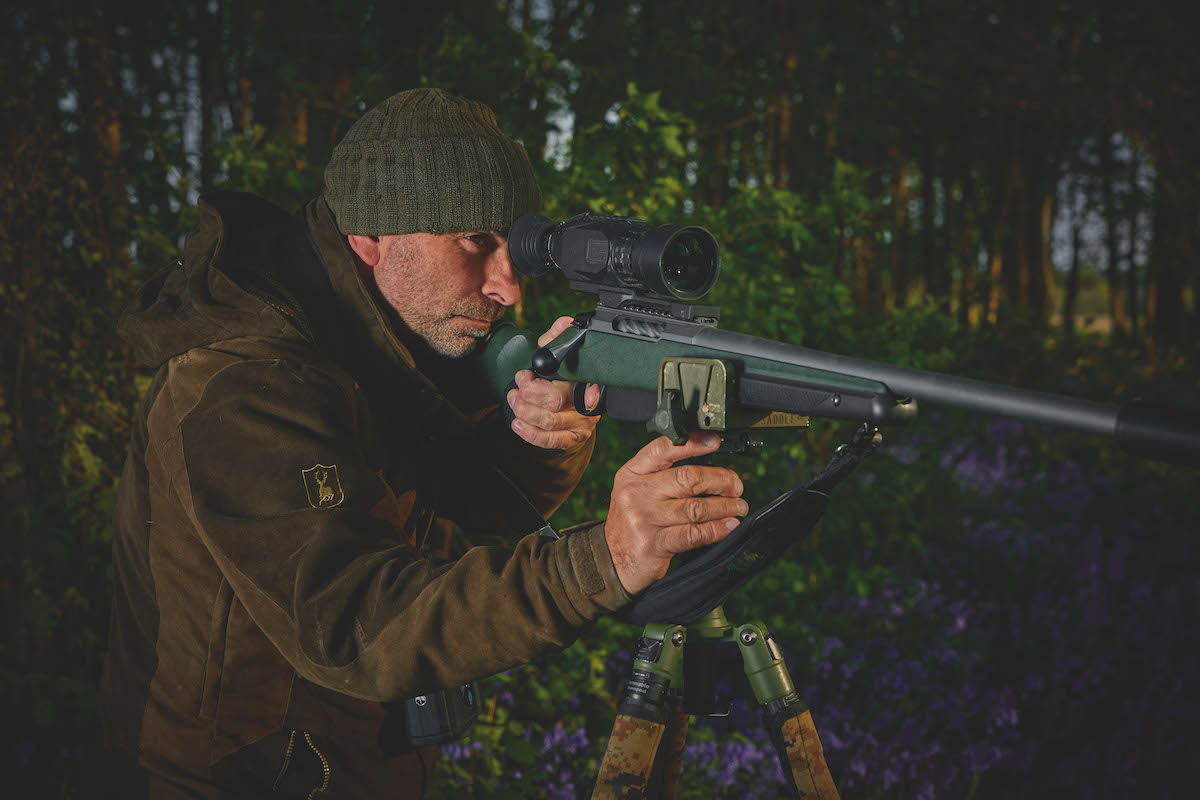Charging a PCP air rifle using a cylinder: here’s how to do it
Mike Morton on how to keep your PCP up and running
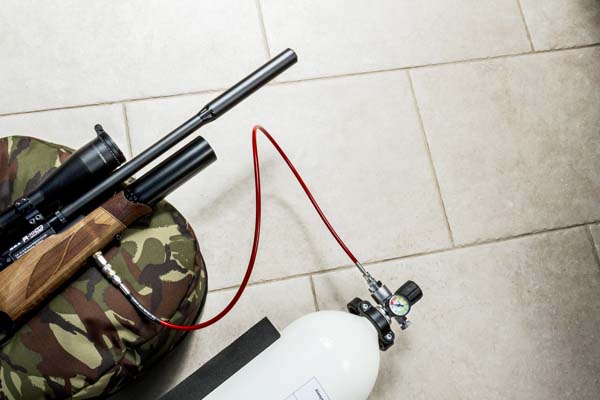
There are a few ways of charging a PCP air rifle. You can of course use a stirrup pump, which is probably simplest. But this can be a hard grind, particularly if you’ve let the air pressure get low.
A much easier option is an airgun charging cylinder. (If you’re looking for an airgun compressor, read our advice on compressor for air guns – what are the best options?)
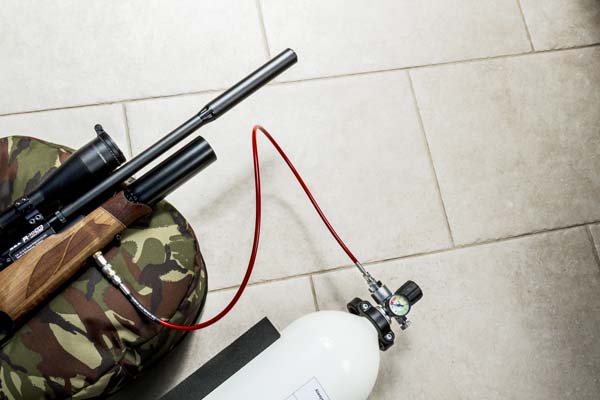
An air rifle charging cylinder in use
Charging cylinders
Cylinders are also sometimes known as tanks or bottles. They are basically a source of compressed air, which you connect to an air rifle. Once the pressure in the charging cylinder falls too low, it needs refilling in a specialist diving shop.
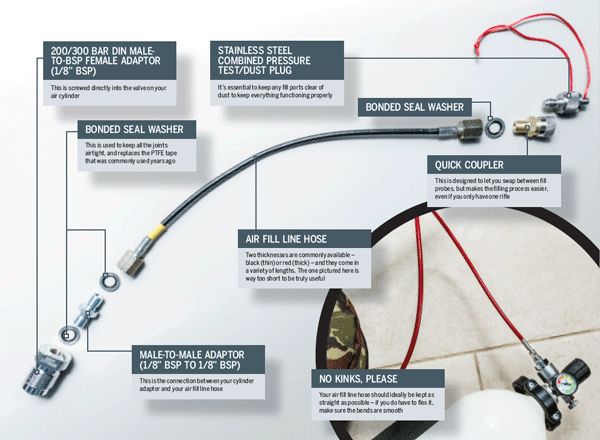
The air fill line
Buying a cylinder
You need to consider the following:
- Size of the cylinder in litres
- Cylinder material
- Fill pressure
Tip: Always go for a cylinder that’s capable of being filled to the greater pressure, as you’ll get more fills for your guns from the same size of cylinder.
In Europe charging cylinders are usually made out of steel or lighter carbon-fibre.
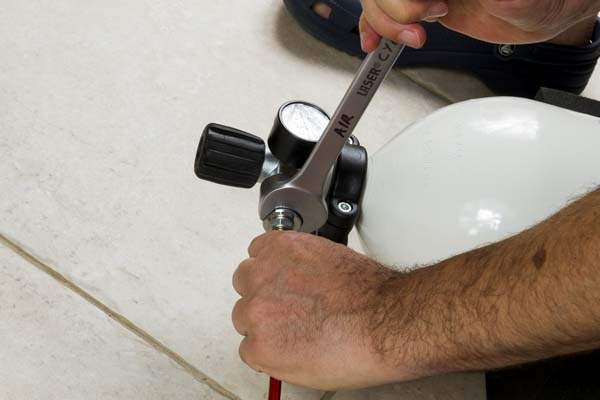
A spanner is needed for fitting and removing the air line
Steel cylinders need to be tested every five years. Carbon-fibre cylinders are more expensive and may need testing more regularly.
You can also buy charging cylinders with a capacity of 500cc which can be taken shooting to top up the rifle during the outing.
Home use cylinders are usually 3 litre, 7 litre, 9 litre and 12 litre. The larger they are, the more air they’ll hold.
Valves and air fill lines
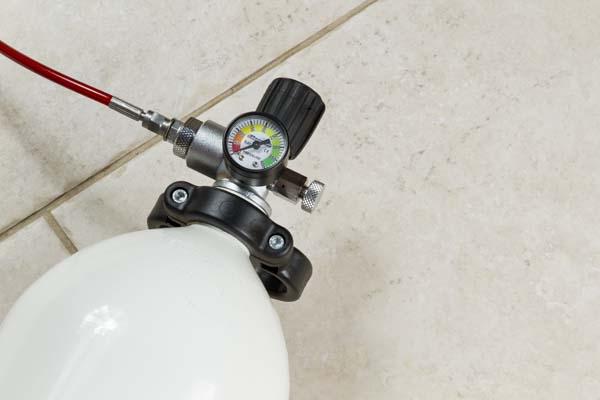
Regulator/valve unit screwed into the neck of the cylinder
The regulator/valve unit screwed into the neck of the cylinder regulates the flow of compressed air and contains the pressure gauge, the main on/off valve, the bleed valve and the air outlet.
Choose an air outlet that points to the side of the gauge so it is easier to read during filling. If it points to the rear you will find filling much harder and have to bend the air hose.
The air fill line is the connection between the charging cylinder and gun. You may need to buy the components separately (try Best Fittings.) Air fill line hoses usually come in a narrow diameter with a black shroud, or a wider diameter with a red shroud. The black type is usually cheaper but the red type is more durable.
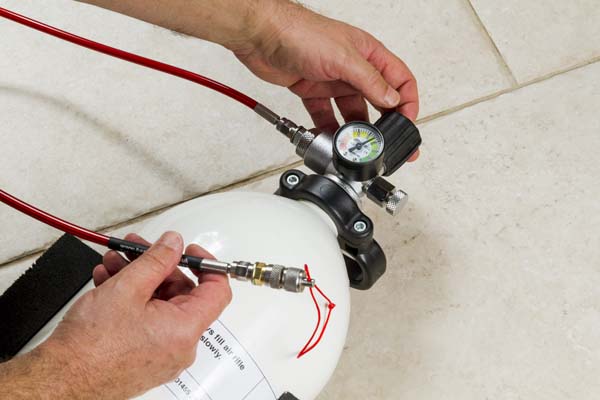
Checking the maximum air pressure remaining
Think about the length of the hose you’ll need. A longer hose gives you more space to manoeuvre and you are less likely to bend the hose, which should be avoided whenever possible.
Filling a PCP air rifle
Always turn the air on slowly, as valves and seals can be damaged if they receive too much high-pressure air too quickly. Most modern valves have an inbuilt restrictor, automatically slowing down the flow, but you should still turn on the air slowly.
Don’t fill your rifle to a higher pressure than the manufacturer recommends. You won’t get any more shots and you could damage your gun.
Fill Limit
Most PCP airgunners wonder about how many fills they will get from their cylinder. It depends on a few things: the capacity of the cylinder, the pressure to which it’s been filled, the size of the air cylinder on the air rifle, the pressure to which that can be filled, the efficiency of the rifle and how many shots have been taken before refilling.
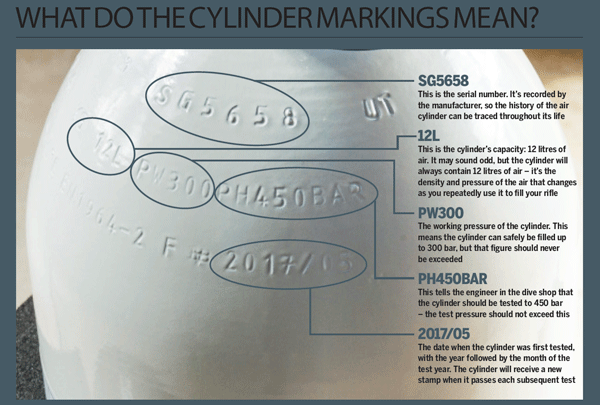
Obviously the pressure inside your charging cylinder will fall every time you fill your gun. When the pressure drops too low, you’ll need to take the cylinder to the dive shop so it can be refilled. It’s worth ringing ahead to book it in.
The dive shop cylinder itself is massive and filled by a compressor. One shop I used to go to would only refill its cylinder when the pressure was down to 240 bar, as the staff didn’t like firing up the compressor any more than they had to.
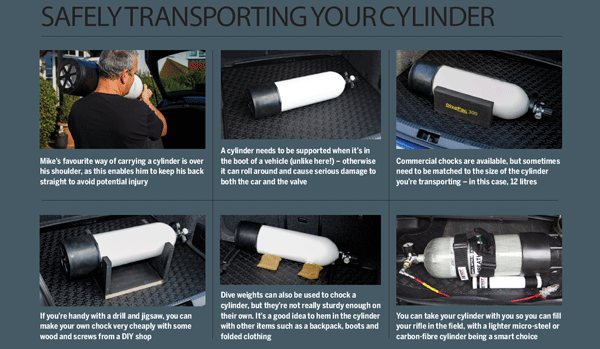
Charging a PCP air rifle
Lay the cylinder on its side for both storage and filling to prevent damage. Think beforehand about where you’re going to place your rifle, making note of the orientation and angle of the fill port.
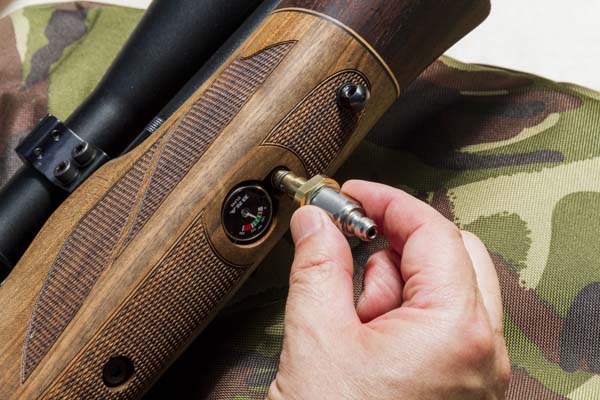
1. When charging a PCP air rifle fit the fill probe to the rifle before attaching it to the fill line using the quick coupler system. This prevents strain on the rifle or the hose
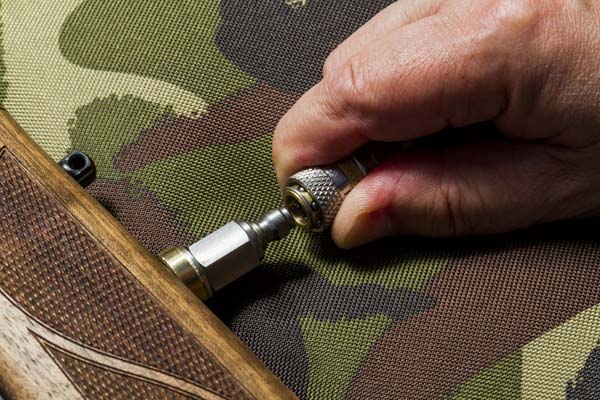
2. The air fill line can now be connected by pulling back on the spring-loaded knurled ring on the quick coupler and snapping it into place over the quick coupler plug
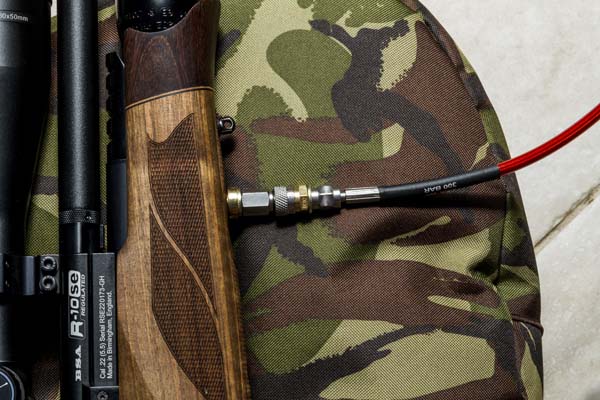
3. Take care to keep the air fill line hose as straight as possible – this helps airflow and minimises strain on the components
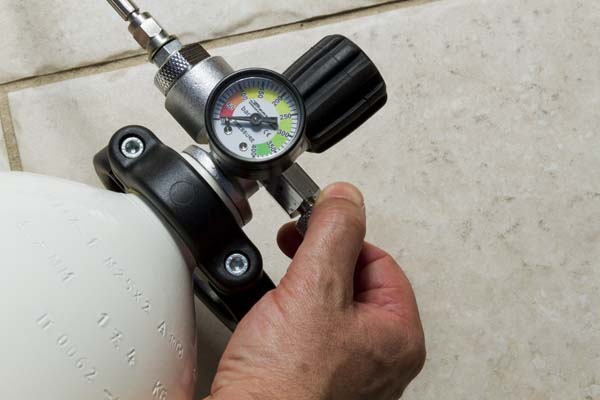
4. Close the bleed valve, but not too tight, which just applies unnecessary force to the seals
5. When you can clearly see the needle on the air gauge, open the main valve slowly, taking care to close the valve when you’ve reached the desired fill pressure. You’ll also need to open the bleed valve before your can remove the air fill line, as this will still be under pressure, even with the main valve closed
Getting your cylinder ready for a refill
Remove your air fill line before you take your cylinder to the shop. The staff at the shop don’t need it on.
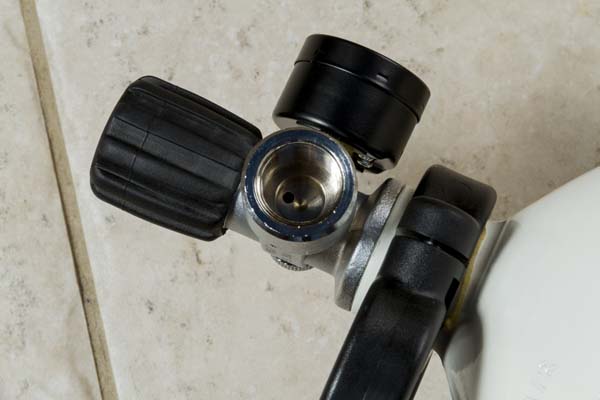
It’s important to keep the cylinder’s DIN valve clean when no air fill line is fitted, when it’s in transit to or from the dive shop
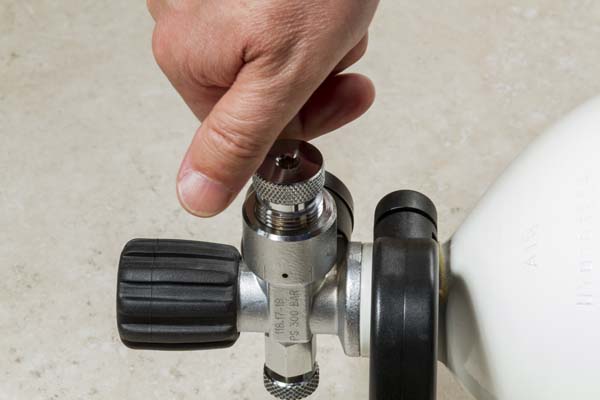
You can use a commercial DIN dust plug for this.
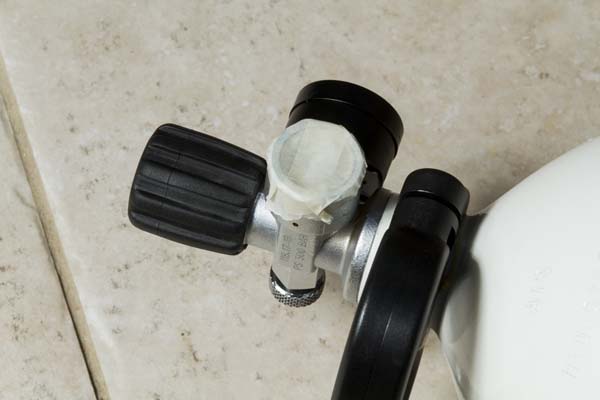
Alternatively you can use a couple of strips of masking tape to keep dust and other particles out of your valve
Testing
From time to time your cylinder and valve will need to be tested to ensure it’s still safe to fill and use at the very high pressures demanded of it. If it’s not safe staff will refuse to fill it.
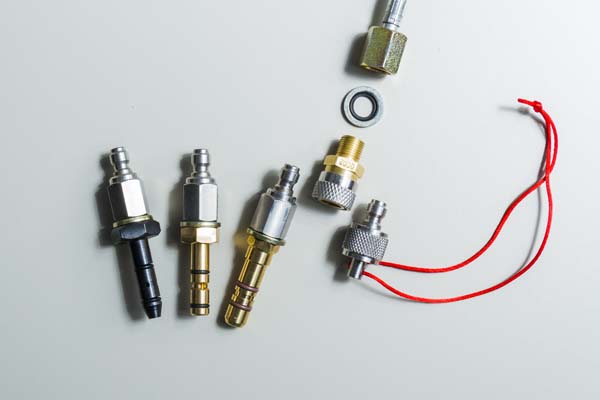
A quick coupler plug is needed to connect the fill probe that comes with your rifle to the quick coupler itself. You’ll need at least one per manufacturer; those shown here are for Weihrauch, some Daystate and Webley rifles

